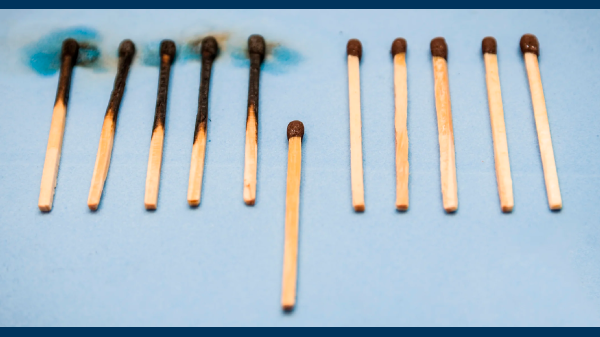Rabbi Dr Ulrike Offenberg | Reform Jewish Community of Hamelin, Germany
 This year the parashot of Tazria and Metzora are bound together to a double parashah, and neither of them has ever been one of the favourite Torah readings of Liberal Jews. We hear about skin afflictions, swellings, rashes, body discharges and how the priest checks their colours or appearance to decide about the religious and social status of the affected person. Pure or impure, tahor or tamé – that is the question. Do the symptoms disappear or change after seven days of quarantine? Can this person be allowed to join the community with his or her family or household again? May s/he enter the sanctuary precinct to affirm the relationship with God by offering a sacrifice? Though reading about all these procedures is not the most elevating stuff, quite shocking is the obligation of the sick person to run around, to shout out and warn others of him/herself:
This year the parashot of Tazria and Metzora are bound together to a double parashah, and neither of them has ever been one of the favourite Torah readings of Liberal Jews. We hear about skin afflictions, swellings, rashes, body discharges and how the priest checks their colours or appearance to decide about the religious and social status of the affected person. Pure or impure, tahor or tamé – that is the question. Do the symptoms disappear or change after seven days of quarantine? Can this person be allowed to join the community with his or her family or household again? May s/he enter the sanctuary precinct to affirm the relationship with God by offering a sacrifice? Though reading about all these procedures is not the most elevating stuff, quite shocking is the obligation of the sick person to run around, to shout out and warn others of him/herself:
“As for the person with a leprous affection, his clothes shall be rent, his head shall be left bare, and he shall cover over his upper lip; and he shall call out, “Impure! Impure!”. He shall be impure as long as the disease is on him. Being impure, he shall dwell apart; his dwelling shall be outside the camp.” (Lev 13:45-46)
An illness which it is almost impossible to control whether one contracts it or not, is put in relation to questions of ritual purity and impurity, of access to holiness or the obligation to stay away from it. The affected people are barred from participation in cultic and communal activities – that challenges profoundly our religious and social convictions. It is therefore no surprise that modern Torah commentaries have long introductions to these Parashot, and rabbis prefer to preach against them rather than praising their message.
But this year everything has changed. This year we got a different understanding of these texts. In our case it’s about a lung disease, not about skin afflictions or bodily discharge but the social measures are almost the same. Hesger – isolation, Bidud – quarantine; the modern Hebrew words come from this week’s parashah. Worldwide entire countries went into isolation, social distancing is compulsory, hospitals and old-age homes are under seclusion, infected people are quarantined. Those who don’t comply may expect monetary penalty or even prison, police enforces these measures with might. The sick of COVID-19 are not allowed any visits, we hear of lonely deaths in hospital wards, only nurses saying a prayer or a comforting word to the dying, if at all. We experience the inexplicable sadness of burials with just the rabbi and the funeral director present, live-streamed to the mourning family. It is shocking, our values which shaped our rituals and our social behavior have been shaken. How to express closeness and comfort via digital media?
Why does this change our reading of Tazria-Metzora? This year we identify with the other perspective, with the examining priest and the need of the society to protect itself. We agree that temporarily the emotional, social and economic needs of individuals have to be disregarded to prevent further spreading of the virus, to save the lives of thousands and millions of people. And regarding the exclusion from the sanctuary we have learned that Kedushah (Holiness) is not to be experienced only or mainly in rituals or in invoking God’s name in service and prayer. Beyond this sphere Kedushah exists first of all in the preserving of life, of the embodied presence of God in this world.
In addition – or rather in a counterpoint – to the Torah reading we hear the message of the Haftarah (2 Kings 7:3-20). Here four metzora’im, leprous people, excluded from their own society and left to death by hunger, save their town by an act of courage and despair. In the moment of rescue and triumph they remember the imperative of solidarity that they themselves never experienced. Thanks to them all of the townspeople are saved and provided with food and freedom. This story teaches us that a society is not mainly protected by harsh restrictions (also the Torah talks only of temporary limited measures) and by finding medical solutions to a virus or another specific disease. In the longer term it is only about how a society deals with the illness and the sick people – this will decide whether society will be saved or not. In our Haftarah redemption comes from the least respected people who rescue the society. Currently we learn which professions are of systemic importance and, surprise, mostly these are the underpaid nurses, caretakers, shop-assistants, power plant workers, public officials…
In a time of social distancing we are brought close to texts which tell us about society, loving and respectful relationships, and where holiness is to be found.
The views and opinions expressed in this article are those of the author(s) and do not necessarily reflect the official policy or position of the World Union for Progressive Judaism (WUPJ).
